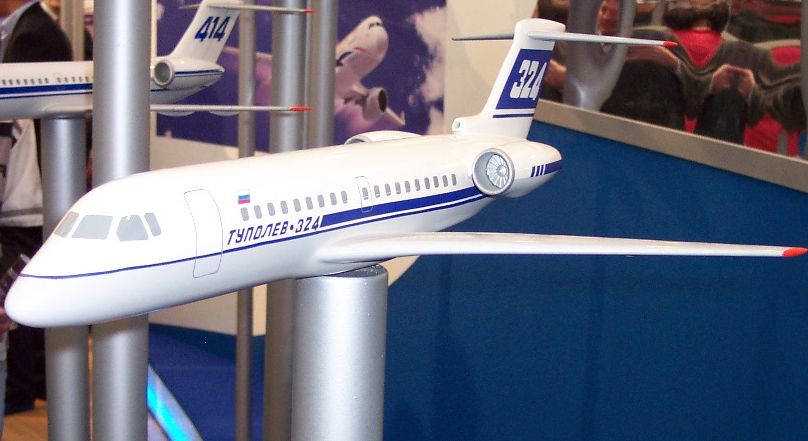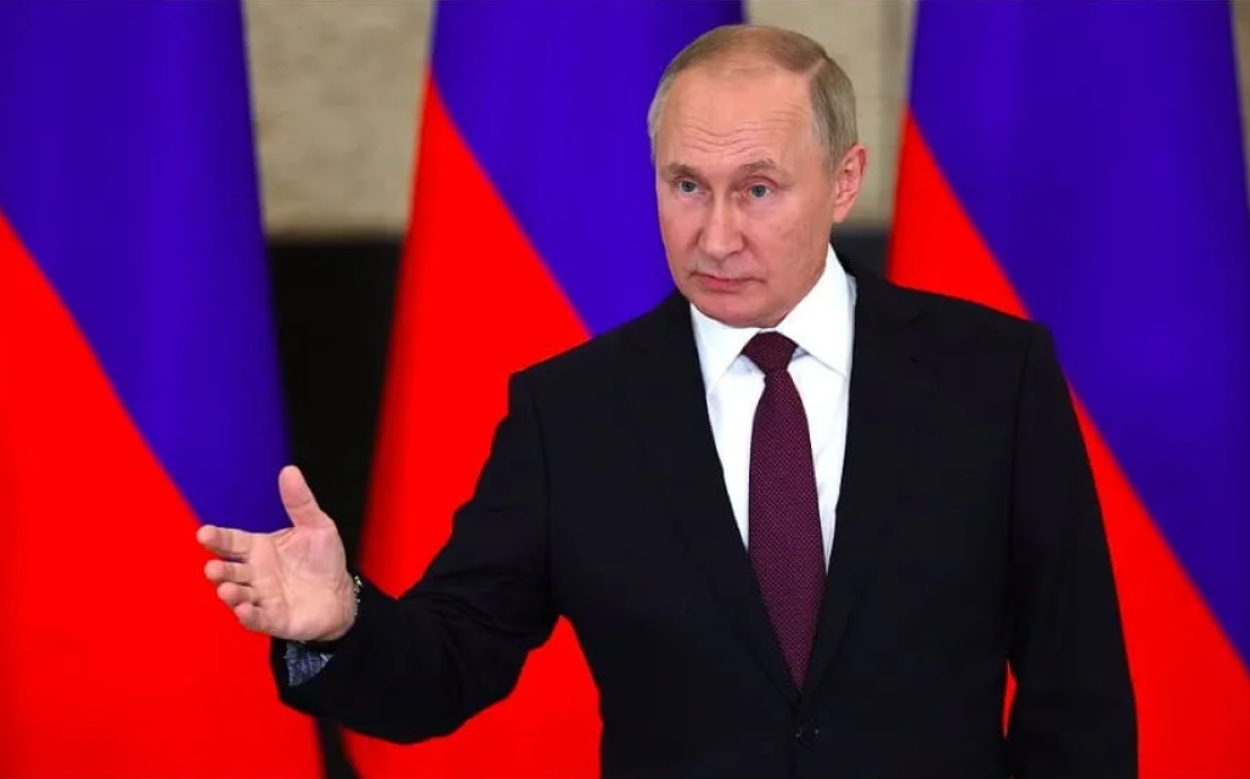Russian gas and energy giant Gazprom is leading the revival of the Tupolev Tu-324 business jet under a new brand, Aurus.
Designed in the 1990s by the government administration of the Tatarstan region, the entire setup – if the effort goes through – would be owned by Gazprom and not the United Aircraft Corporation (UAC) or Tupolev, according to Russian media.
A report on Business Online quoting “sources in the aviation industry” said that the plan stems from the desire to have Russia’s “first specialized business jet…part of the Aurus transport line.”
Whether this involves a larger vision to enter the global private business jet market, dominated by Bombardier, Dassault, and Learjet, is unclear.
However, Russia has been developing its Sukhoi Superjet SSJ-00 and Tupolev MC-21 with indigenous components, not the European and American aerospace components and electronics it previously depended on.
This is especially true after the wide-ranging sanctions on Russia’s commerce and industry following the 2014 Donbas War and the February 2022 war in Ukraine.
Therefore, it is consistent with Russia’s prevalent desire to have a civilian and defense aerospace sector serving as a viable alternative to the Western aviation industry for developing countries.
Assuming that is untrue, Gazprom has several commercial interests in China, Central Asia, and Africa. Thus, the company could have felt an immediate need to have a dedicated airline/aircraft for flying its executives.
Gazprom’s Recent Business Moves
“Tupolev…is creating a design bureau for this purpose,” Business Online said. It added that Gazprom, the Ministry of Industry and Trade, and the United Shipbuilding Corporation (USC) also “signed an agreement of intent to cooperate in the implementation of the Aurus-Marine project – the creation of a premium class vessel.”

While a “fundamental decision” for the effort had “already been made at the government level,” all the project needed was “investment.”
Signs that Gazprom would be entering the aviation industry could be seen in early 2023. In March of that year, “Gazprom Tech LLC was created in St. Petersburg, owned by two wholly owned subsidiaries of Gazprom – Gazprom Capital LLC and Gazprom Gasoil Product Holding LLC.”
Then, in September 2023, Gazprom Tech bought Aurus-Aero LLC. Aurus-Aero was established in July 2022 with investment from the Tatarstan government as a wholly owned subsidiary of UAC-Oak Resource LLC. Its “main activity” is the production of “helicopters, airplanes and other aircraft.”
Gazprom Tech is positioned “to consolidate high-tech assets in the field of shipbuilding, aviation, and automotive industries, as well as radio electronics, space, and other activities,” Business Online said.
Gazprom has posted vacancies for recruiting employees, primarily someone to head the production and cooperation of aviation equipment, a head of the department for aircraft design, and a head of the department for avionics and aircraft systems.
Interestingly, the same Russian team that worked on the Chinese-Russian CR929 wide-body commercial aircraft until Russia withdrew in 2023 would be working on the project. China went alone and produced the COMAC C929 commercial plane.
How Tu-324 Originated?
The history of the Tu-324 is rooted in the early 1990s, under late President Boris Yeltsin, when Russia wanted to replace the Yak-40 and the Tupolev Tu-134. Moreover, Yeltsin had also ordered the stop of the purchase of the Tu-22, Tu-22M3, and Tu-160 strategic bombers, making the situation at the Tupolev factory “catastrophic.”
Around the same time, a study by the Gromov Flight Research Institute projected a need for an aircraft to replace the Yak-40 and Tu-134 from 2000 when their “flight life” would be “exhausted.” The lack of funding for the project was met by “selling oil abroad.”
Citing “open data,” Business Online states that “approximately US$100 million was invested in the design of the Tu-324,” against a total required estimate of US$330 million. In 1997, the project directorate created by the Republic of Tatarstan entered into an agreement with Tupolev and vendors developing the components and “on-board equipment.”
Software was “purchased specifically” for the project, while specialists were trained in Germany. This was when Russia was facing a severe economic crisis following the dissolution of the Soviet Union and was seeking to normalize relations with Europe and the US.
Aircraft Features
The Tu-324 became the first aircraft in Russia to be designed digitally. “Tupolev coped with the task perfectly and survived for almost three years thanks to the republic’s order,” Business Online quoted Vladimir Kireev, an advisor to the Prime Minister of Tatarstan. Kireev is also the director of the management group for the Tu-324.
The Tu-324 has three versions – a passenger plane with a range of 2,500 thousand kilometers and a capacity of 52 passengers; a VIP plane, with a range of up to 7,000 kilometers that can carry 19 persons; and a 72-seater that can fly up to 3,500-km. The last variant has a “more powerful engine and an increased wing and tail area.”
Interestingly, the Ukrainian Motor Sich used its money to develop the Ai-22 engine specifically for the Tu-324 for two-and-a-half years. “Ukrainians (were so interested) that they produced “three prototypes.” The Research Institute of Aviation Equipment also developed avionics, later installed on the Beriev Be-200 amphibious plane.
The working documentation was transferred, and the production of equipment and tools began, with deliveries of the Tu-324 expected to start in 2007. “But mutual understanding with Moscow was never achieved,” the report added, indicating the Russian government was not inclined to continue with the project.
But the “engine was almost ready for production,” and US$100 million was “spent on developing the project.” The report quotes officials who say the project lagged since it was seen as a competitor to the Sukhoi Superjet.
The head of the Republic of Tatarstan, Rustam Minnikhanov, promoted the Tu-324. In an April 2015 interview with Rossiyskaya Gazeta, Minnikhanov made many proposals for reviving the aviation industry, including the Tu-324.
Minnikhanov said, “We can no longer leave regional lines without such an aircraft and continue to get to neighboring regions through Moscow. It is no coincidence that the Tu-134 and Yak-40 aircraft, which the Tu-324 should replace, have produced more than 1,800 units. Analogues of the Tu-324 remain widely in demand. Russia has already imported more than 70 Brazilian and Canadian aircraft units.”
In May 2016, Russian President Vladimir Putin said it was “difficult” to deliver passengers to the Far East, Eastern Siberia, and other regions. “Often people have to fly to nearby, neighboring regions via Moscow or St. Petersburg. (Our) own regional aircraft, with the ability to land and take off from unpaved strips, is critical,” Putin said.

“While Russia had a lot of such aircraft, they were all outdated. Neither can you always import planes as we have done until now. For a country like Russia, you need your aircraft.”
Russia’s Minister of Industry and Trade of the Russian Federation, Denis Manturov, has presented three turboprop aircraft alternatives, including the Ilyushin Il-114, the Ukrainian An-140, and the Chinese MA-700.
The report quoted another official, who revealed that the Tu-324 also lagged because resources were devoted to the Yakovlev Design Bureau’s Yak MC-21.
Now, the “main technical problem” with the reincarnation of the project can be called the lack of an engine. “There are no engines yet, which means there is no plane,” said an official quoted by Business Online.
The documentation for the Ai-22 was also not wholly transferred to Russia then, and the PD-8, which is currently being developed for Superjet, is unsuitable for the Tu-324.
- The author can be reached at satamp@gmail.com
- Follow EurAsian Times on Google News




